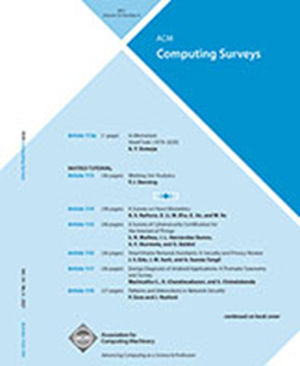顺序决策的符号、次符号和混合方法综述
IF 23.8
1区 计算机科学
Q1 COMPUTER SCIENCE, THEORY & METHODS
引用次数: 0
摘要
在顺序决策(SDM)领域,历来有两种范式争夺主导地位:自动规划(AP)和强化学习(RL)。本着和解的精神,本文回顾了用于解决序列决策过程(SDP)的自动规划、强化学习和混合方法(如新颖的学习规划技术),重点是它们的知识表示:符号表示、次符号表示或组合表示。此外,它还包括学习 SDP 结构的方法。最后,我们比较了现有方法的优缺点,并得出结论:神经符号人工智能是一种很有前途的 SDM 方法,因为它将 AP 和 RL 与混合知识表示法相结合。本文章由计算机程序翻译,如有差异,请以英文原文为准。
A Review of Symbolic, Subsymbolic and Hybrid Methods for Sequential Decision Making
In the field of Sequential Decision Making (SDM), two paradigms have historically vied for supremacy: Automated Planning (AP) and Reinforcement Learning (RL). In the spirit of reconciliation, this paper reviews AP, RL and hybrid methods (e.g., novel learn to plan techniques) for solving Sequential Decision Processes (SDPs), focusing on their knowledge representation: symbolic, subsymbolic or a combination. Additionally, it also covers methods for learning the SDP structure. Finally, we compare the advantages and drawbacks of the existing methods and conclude that neurosymbolic AI poses a promising approach for SDM, since it combines AP and RL with a hybrid knowledge representation.
求助全文
通过发布文献求助,成功后即可免费获取论文全文。
去求助
来源期刊

ACM Computing Surveys
工程技术-计算机:理论方法
CiteScore
33.20
自引率
0.60%
发文量
372
审稿时长
12 months
期刊介绍:
ACM Computing Surveys is an academic journal that focuses on publishing surveys and tutorials on various areas of computing research and practice. The journal aims to provide comprehensive and easily understandable articles that guide readers through the literature and help them understand topics outside their specialties. In terms of impact, CSUR has a high reputation with a 2022 Impact Factor of 16.6. It is ranked 3rd out of 111 journals in the field of Computer Science Theory & Methods.
ACM Computing Surveys is indexed and abstracted in various services, including AI2 Semantic Scholar, Baidu, Clarivate/ISI: JCR, CNKI, DeepDyve, DTU, EBSCO: EDS/HOST, and IET Inspec, among others.
 求助内容:
求助内容: 应助结果提醒方式:
应助结果提醒方式:


